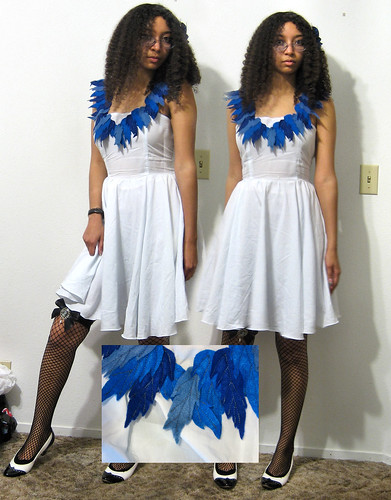
You've figured out what you're going to do, picked up your supplies, and made your cuts. Now you're ready to start sewing! Now, I can't tell you everything about sewing; books have been written on the subject and this blog post could hardly compare. But, I will include some hints and tricks that you might not find in other sources. Check out my diy links collection for online sources to help you with your sewing.
If you're new to sewing, avoid topstitiching. Topstitching is just stitches that show on the outside of your garment. If you're new to sewing, your stitching lines likely won't be straight, and that will make your recon look messy. You might consider using dissapearing ink pens to mark your stitching lines and help guide you in a straight line. There are also these neat magnetic seam guides that you can buy at your local sewing store that you can stick on your machine and since it's raised, it will help you stitch a straight line.
Don't forget to finish your seams! Here's an article from Sew, Mama, Sew! that covers seam finishes. Seam finishes may seem annoying--particularly if you don't have a serger-- but if you love your garment and don't love fraying edges, seam finishes are a must.
Put your pins in a 90 degree angle to your sewing line. This allows you to sew over your pins.
You taste test food when you prepare it, do the same for your garment. Test the fit at various stages. I hold pieces up, and pin them together on me to ensure it will fit. Test the fit anytime you can. It will mean you have to take out less stitching if something's amiss.
If you're having issues with your machine, i.e. everytime you try to stitch, the thread goes all heywire and your machine makes grumpy noises, you may just be guiding your fabric a little too much. Back off and let your machine do the work. Keep your touch light and just keep the fabric straight; let your machine's feed dogs carry the fabric through the machine. Also, if your thread messes up, it's a good idea to rethread the top thread and take out and replace your bobbin regardless of which of the two seemed to have the issue. It may seem annoying, but it's not as annoying as having to take out wonky stitching again because your machine is still grumpy. As a side note, having automatic threader on your machine is totally worth it.
If you don't have a sewing machine, you're not out of luck. Coats and Clark covers the basic handstitches here. The backstitch is what you're going to want to use for most seams. Those with machines may also like the inside blind stitch or invisible cross-stitch covered in the article, which are good for hems.
Feel free to post questions and more tips below. You can also check out my diy links list for more online sources for sewing information and sewing communities filled with people who know more about sewing than I do.
Sewing up a storm,
Ivy Frozen

1 comment:
Altering or renewing clothing you already have is a great way to recycle and be earth friendly. From the perspective of an artistic woman with a great imagination, those words basically translate to anything I can find that a needle and thread can pierce and hold in place. This of course means everything from buttons and raffia, to fabric scraps and beads. For some more ideas as they say ,"From Past Fad to Future Fashion" check out J & O Fabric Store for more good ideas.
Post a Comment